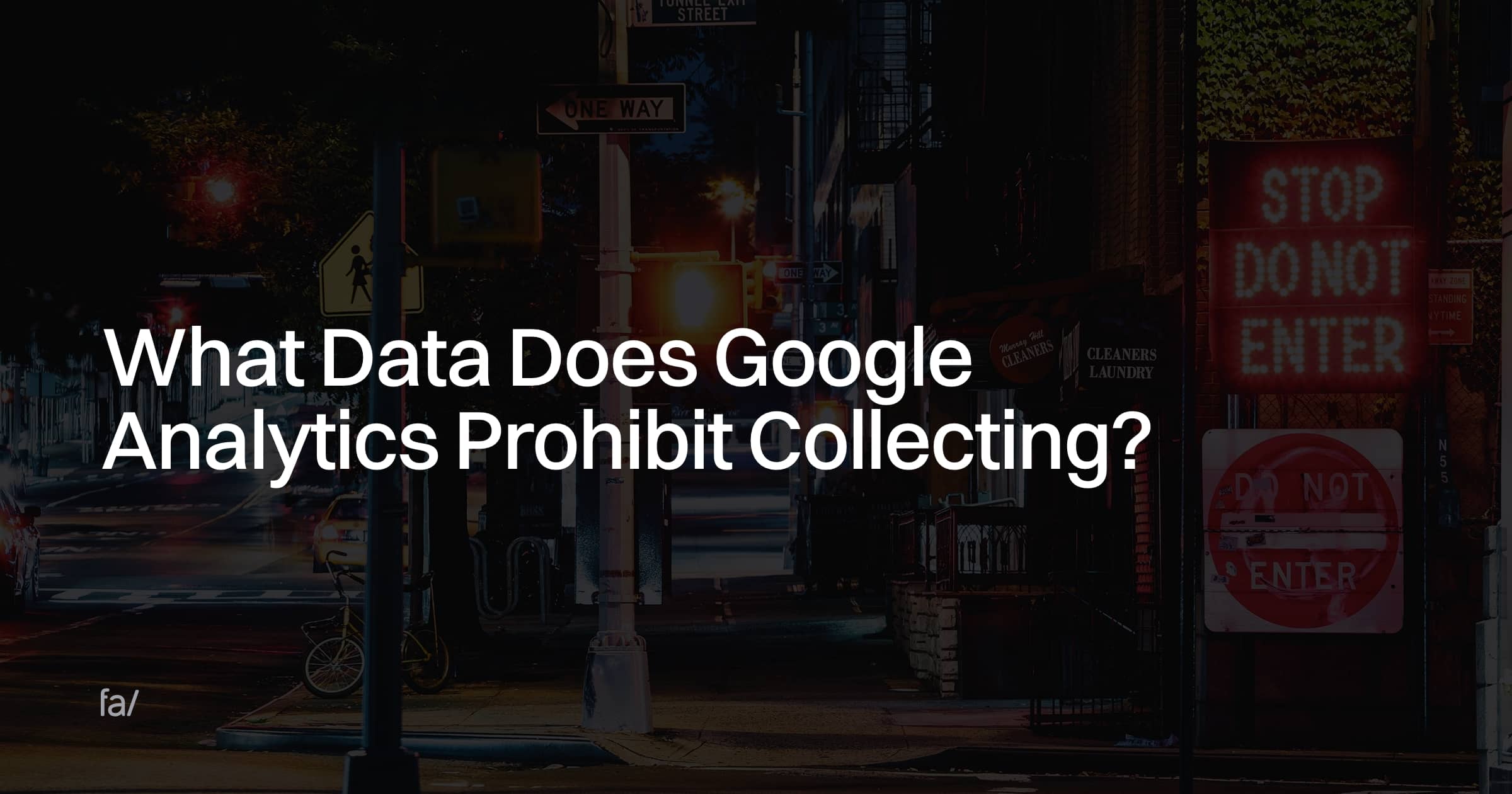Understanding Google Analytics: What Data Does Google Analytics Prohibit Collecting?
Understanding Google Analytics: What Data Does Google Analytics Prohibit Collecting?
Blog Article
Mastering the Art of Conquering Information Collection Limitations in Google Analytics for Better Decision-Making
In the realm of electronic analytics, the ability to remove purposeful understandings from information is critical for notified decision-making. By using advanced methods and tactical approaches, organizations can raise their information high quality, unlock concealed understandings, and pave the means for even more informed and efficient decisions.
Data Quality Assessment
Information top quality analysis involves assessing different aspects such as precision, completeness, consistency, and timeliness of the data. One essential aspect to take into consideration is data accuracy, which refers to exactly how well the data mirrors the real values of the metrics being gauged.
Efficiency of information is one more important consider evaluating data top quality. It entails making sure that all necessary data points are accumulated which there are no spaces in the information. Incomplete data can alter evaluation outcomes and prevent the ability to obtain a thorough view of user actions or site performance. Consistency checks are likewise crucial in data quality evaluation to determine any type of discrepancies or abnormalities within the data set. Timeliness is equally crucial, as obsolete information might no more be relevant for decision-making processes. By prioritizing data high quality assessment in Google Analytics, services can enhance the dependability of their analytics records and make even more enlightened choices based upon exact understandings.
Advanced Tracking Techniques
Using advanced monitoring strategies in Google Analytics can significantly boost the deepness and granularity of data accumulated for more detailed analysis and insights. One such strategy is event monitoring, which allows for the tracking of details interactions on a site, like click buttons, downloads of files, or video views. By implementing event monitoring, organizations can get a much deeper understanding of user behavior and engagement with their on-line material.
Additionally, custom dimensions and metrics provide a means to customize Google Analytics to particular organization needs. Custom measurements enable the creation of brand-new information points, such as customer roles or consumer sections, while personalized metrics make it possible for the tracking of one-of-a-kind performance indications, like profits per user or average order value.
In addition, the usage of Google Tag Supervisor can enhance the implementation of monitoring codes and tags across a site, making it easier to handle and release advanced monitoring configurations. By utilizing these innovative monitoring techniques, organizations can unlock important understandings and enhance their online strategies for far better decision-making.
Custom Dimension Application
To boost the depth of information gathered in Google Analytics beyond advanced monitoring techniques like event tracking, businesses can carry out custom-made measurements for more customized understandings. Custom-made dimensions enable businesses to specify and collect particular information factors that pertain to their unique objectives and purposes (What Data Does Google Analytics Prohibit Collecting?). By appointing customized measurements to different elements on a web site, such as user communications, demographics, or session information, organizations can gain a more granular understanding of exactly how individuals involve with their online homes

Acknowledgment Modeling Strategies
By using the best acknowledgment version, businesses can properly associate conversions to the appropriate touchpoints along the consumer trip. One typical acknowledgment version is the Last Interaction version, which provides credit rating for a conversion to the last touchpoint a customer engaged with prior to transforming.

Information Experiencing Evasion
When taking care of large quantities of information in Google Analytics, getting over data tasting is necessary to make certain precise understandings are obtained for notified decision-making. Data tasting occurs when Google Analytics estimates patterns in data as opposed to assessing the complete dataset, possibly leading to manipulated results. To avoid data sampling, one efficient technique is to reduce the day array being evaluated. By concentrating on shorter timespan, the likelihood of coming across tasted information decreases, supplying an extra accurate depiction of user behavior. Furthermore, using Google Analytics 360, the costs version of the system, can assist mitigate sampling as it enables for greater data thresholds before tasting begins. Executing filters to limit the data being examined can likewise help in preventing tasting issues. By taking these aggressive actions to minimize information sampling, businesses can extract a lot more exact understandings from Google Analytics, leading to better see this website decision-making and boosted general efficiency.
Verdict
Finally, mastering the art of getting over data collection constraints in Google Analytics is important for making notified choices. resource By conducting a comprehensive information high quality evaluation, applying sophisticated monitoring methods, utilizing customized dimensions, using attribution modeling approaches, and avoiding information tasting, businesses can make certain that they have exact and reputable information to base their choices on. This will eventually lead to a lot more reliable strategies and much better end results for the company.

Report this page